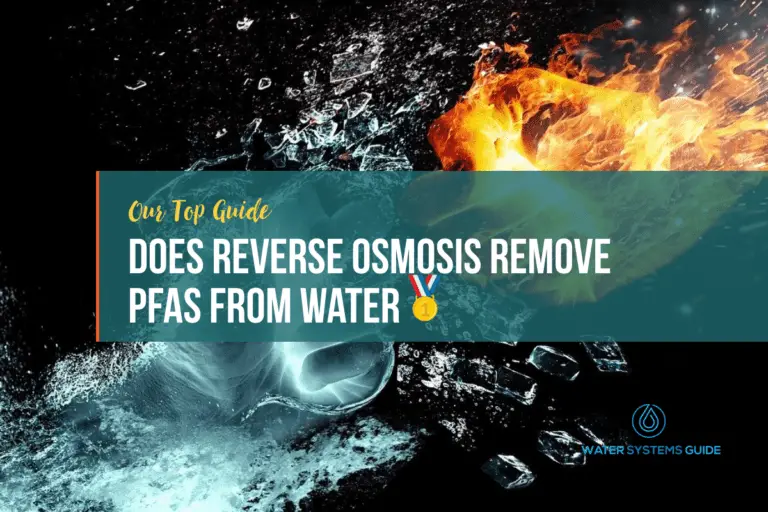Does Reverse Osmosis Remove Fluoride From Drinking Water
In this article, we’re going to be discussing whether RO effectively removes Fluoride from water.
What Exactly Is Fluoride
Fluoride is a mineral that is found in water soil and rocks. It is also added to some toothpaste and mouthwash. Fluoride helps to prevent tooth decay and cavities by making the tooth enamel stronger. It can also reverse early signs of tooth decay.
Is Fluoride Beneficial To Humans?
There is a lot of debate surrounding fluoride and whether or not it is beneficial to humans. Some argue that it is necessary for strong teeth and bones, while others claim that it is a toxic chemical that can cause health problems.
Fluoride is added to water through the process of fluoridation, to help prevent dental diseases, and in 1945/46 when it was first introduced into the USA, it did so extremely well, reducing dental caries by 50%.
The truth is that fluoride can be both good and bad for humans, depending on the amount that is consumed.
Too much fluoride can lead to dental fluorosis, which causes the teeth to become stained and brittle. However, the right amount of fluoride can help to prevent tooth decay and improve oral health. It can also cause other health issues over a prolonged period of time.
However, for those who have tested their water source, or suspect that there is excessive levels of Fluoride, then using a water filtration system is a good way to help reduce fluoride levels.
Does RO Remove Fluoride from Drinking Water?
Reverse osmosis is a filtration process that is used to remove contaminants from water. One of the contaminants that can be removed by reverse osmosis is fluoride. Fluoride is a mineral that is added to water in order to help prevent tooth decay. However, too much fluoride can be harmful to your health. Reverse osmosis can remove excess fluoride from drinking water, making it safer to consume.
Should we be reducing fluoride levels in our home water supply
There is a debate over whether we should be reducing fluoride levels in our home water supply. Fluoride is a mineral that is added to water to help prevent tooth decay. Some studies have shown that too much fluoride can be harmful, causing problems with teeth and bones. Other studies have found that fluoride is safe and effective at preventing tooth decay. The American Dental Association supports the use of fluoride in water supplies.
Ultimately, the decision of whether or not to reduce fluoride levels in home water supplies is up to the individual, whilst being advised by their healthcare adviser.
Is There A Risk of Consuming Too Much Fluoride To Our Health?
Yes, there is a risk of consuming too much fluoride. Fluoride is a mineral that is found in many foods and water sources, and it is also added to toothpaste to help prevent cavities.
Too much fluoride can lead to fluorosis, which is a condition that causes white spots on the teeth. In severe cases, it can also cause the enamel to break down and the teeth to become brittle.
However, when considering if your water supply is the cause of excessive levels of fluoride, it’s recommended to go about testing.
How to test your water supply for Fluoride
To test your water supply for fluoride, you will need a water test kit that can be purchased at a local hardware or home improvement store. You will also need a sample of your water that is at least one cup in size.
To collect your sample, fill a clean cup with water from your tap and seal it tightly. Be sure to label your sample with the date and time it was collected.
Next, follow the instructions that come with your water test kit to test the fluoride levels in your water. The results of your test will tell you whether or not your water supply contains fluoride and how much is present.
Alternatively, you can hire a professional to do this for you, as well as advise you about whether water treatment is necessary.
What else does reverse osmosis remove from water?
Alternative Methods Of Removing Fluoride From Water
There are a number of ways to remove fluoride from water, including reverse osmosis, distillation, and ion exchange. Each of these methods has its own advantages and disadvantages, so it is important to choose the right one for your needs.
Reverse osmosis is one of the most effective methods for removing fluoride, but it is also one of the most expensive. Distillation is another effective method, but it requires a lot of energy to operate. Ion exchange is less effective than the other two methods, but it is much cheaper.
Conclusion







